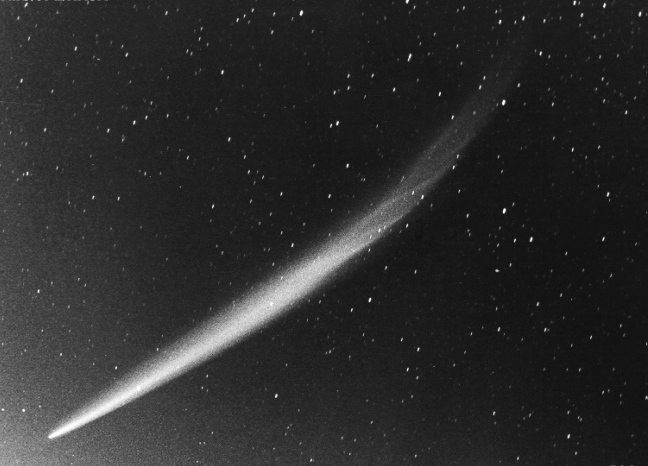
Big new sungrazer comet
Heads up, comet-watchers! The ATLAS survey in Hawaii has discovered another new comet that could become bright in Earth’s skies. The discovery date is September 27, 2024. The comet is so new it’s still waiting for its name. But for now it has the designation of A11bP7I. Predictions for the comet have it reaching as bright as magnitude -5 to -7 when it comes closest to the sun, at perihelion, on October 28. Those ranges would make the comet even brighter than the brightest planet, Venus. It might even be visible in the daytime sky. However, keep in mind that comets are notoriously unpredictable.
The Southern Hemisphere will have the best view before perihelion. After its close encounter with the sun (if it survives!) it could put on a fantastic show for the Northern Hemisphere in the morning skies. It would definitely be something to wake up early for.
In the meantime, don’t forget the other comet in Earth’s skies right now. C/2023 A3 Tsuchinshan-ATLAS will be visible in the morning sky in the east through October 2. Afterwards, it’ll reappear on the other side of the sun in the evening sky after about October 12.
A BIG NEW SUNGRAZING COMET: Today, many astronomers are excited about a new comet discovered just a few days ago by the ATLAS survey. It's so new, it doesn't have a name yet, just the provisional designation "A11bP7I." What's the excitement about? A11bP7I is a sungrazer… pic.twitter.com/BeGArf7Orv
— The Watchmen Earth and Space Connection (@TWESC2023) September 30, 2024
A Kreutz sungrazer
The new sungrazing comet is part of the Kreutz sungrazers. These are comets that come perilously close to the sun, where they can disintegrate or, if we’re lucky, become fantastically bright. Many of the comets through history that have been given the name “Great” (for example the Great Comet of 1882, the Great Comet of 1106 and the Great Comet of 371 BC) were all Kreutz sungrazers. More recently, Comet Ikeya–Seki in 1965 was a Kreutz sungrazer that became as bright as magnitude -11. That’s as bright as a first quarter moon.
Scientists believe Kreutz sungrazers all come from a big comet that broke up a couple millennia ago. Most Kreutz sungrazers are small fragments, but this one may be larger than most.
Will it become as bright as Ikeya-Seki? Not likely. The new comet is about 1 astronomical unit (AU) from the sun now. And it’s about 4 to 5 magnitudes dimmer than Ikeya-Seki was at that distance. The comet is currently around magnitude 15.
But expectations for this comet are still high. Check back for updates, and keep an eye out in late October and early November for this comet! If you get great images, submit them to us! We’d love to see them.
On 2024-09-28 I confirmed comet A11bP7I remotely using 0.43-m f/6.8 @iTelescope_Net T32 at Siding Spring Observatory, Australia. It's possible Kreutz sungrazer comet and can be bright.
Stacked image: shutter speeds equivalent to 20x30s.@Astroguyz @ThePhotoHour @El_Universo_Hoy pic.twitter.com/MVqzXMi8y8
— ?????? ???????/Filipp Romanov (@romanov_filipp) September 29, 2024
Bottom line: A big new sungrazing comet could get really bright – and even be visible in daylight – in late October and early November.











